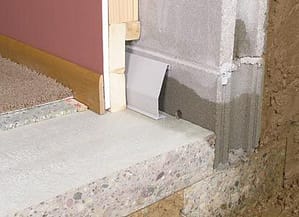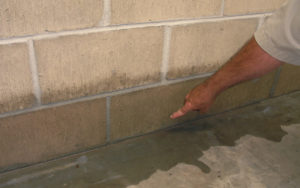The Best Basement Waterproofing Ideas
Table of ContentsRumored Buzz on Best Basement WaterproofingThe Main Principles Of Best Basement Waterproofing How Best Basement Waterproofing can Save You Time, Stress, and Money.Indicators on Best Basement Waterproofing You Need To Know5 Simple Techniques For Best Basement Waterproofing
AdvantaClean's experienced professionals and specialists will certainly find the water resource. If wall surface or slab fractures are existing, we will infuse polyurethane and epoxies right into the fractures and seal the compromise, stopping additional moisture from entering.
If there's condensation on the outside of the foil, you have high moisture in your cellar. If the foil has condensation on the within surface (following to the wall), the soil around your home might be normally damp from a high water table or inadequate soil water drainage.
You can waterproof simply your indoor walls, which might solve the issue. Once they dry out, they adhere completely to concrete and masonry walls.
Best Basement Waterproofing Fundamentals Explained
Concrete water-proof coverings can not be used to formerly repainted surfaces; check the label. Known as densifiers, they are appropriate just for wall surfaces that have not been painted or sealed.
You brush, roll, or spray it on a lot more heavily one gallon covers simply 75 square feet, not the 300 square feet normal with typical paint. Water-proof paint is great for do it yourself application. You can apply it over painted surfaces, and paint over it once it's treated (one gallon costs $37).
It can set you back $10,000 to $15,000, depending on the work needed. Outside waterproofing involves digging deep into all around your home fully depth of the foundation walls, then setting up a waterproof finishing or membrane layer topped by water drainage panels. The panels offer a very easy path for water to move to an outside French drainpipe at the base of your foundation.
A cellar without waterproofing is kind of like that. Your basement does not desire to go through a rainstorm without correct protection just as much as you do not desire to.
The 20-Second Trick For Best Basement Waterproofing
However if you have actually done your study, you 'd know there are two kinds of waterproofing: exterior and interior. It can obtain perplexing what they both mean, which one's a better investment, and what will actually keep the water out. Don't stress, we put together this blog to easily define both techniques for you and discuss the pros and cons of each.
Outside waterproofing is a waterproofing method that involves securing your home from the exterior. The foundation wall surfaces are then cleaned, secured, and covered with a water-proof membrane layer or sealant.

The Best Basement Waterproofing Ideas
It's a much more engaged process that needs excavating up your backyard, which is pricey and lengthy. Outside waterproofing entails removing every little thing surrounding your house, consisting of verandas, driveways, pathways, landscaping, air conditioner units, decks, and so on. If any of the job was done inaccurately and water is still entering your cellar, there isn't much you can do to fix or repair it.
Inside cellar waterproofing entails waterproofing from the inside. Any type of water that leakages into your basement is rerouted prior to it touches your flooring. It's type of like using a raincoat under your clothing. It entails 2 points: a water drainage track and a sump pump. It works by this page sealing the other within of your basement walls and floors so water that attempts to enter is directed out through a sump pump.
It's an effective technique to water-proof your cellar - Best Basement Waterproofing. The drawback of indoor cellar waterproofing mostly pertains to the setup procedure. This method requires stored things, furniture, and built-in shelving or cabinets to be moved from touching the cellar wall surfaces. And throughout installation, your basement can not be used. The most significant distinction in between the two approaches is this: Exterior waterproofing is a preventative option and indoor waterproofing is a rehabilitative solution.
A Biased View of Best Basement Waterproofing
To conclude, outside and interior basement waterproofing are both efficient techniques of protecting your home from water damage. Exterior waterproofing creates a barrier that protects against water from entering your home, while indoor waterproofing redirects water that does enter your look at more info home. And it is very important to keep in mind that exterior waterproofing is a pricey and disruptive setup procedure when compared to indoor waterproofing.
Whichever method you select, make sure you pick a trusted and credible service provider for the work. If you have any kind of questions regarding cellar waterproofing, please get to out to us.
You can fill in our type below, start a conversation in the bottom right-hand corner, or call us at 1-800-827-0702.